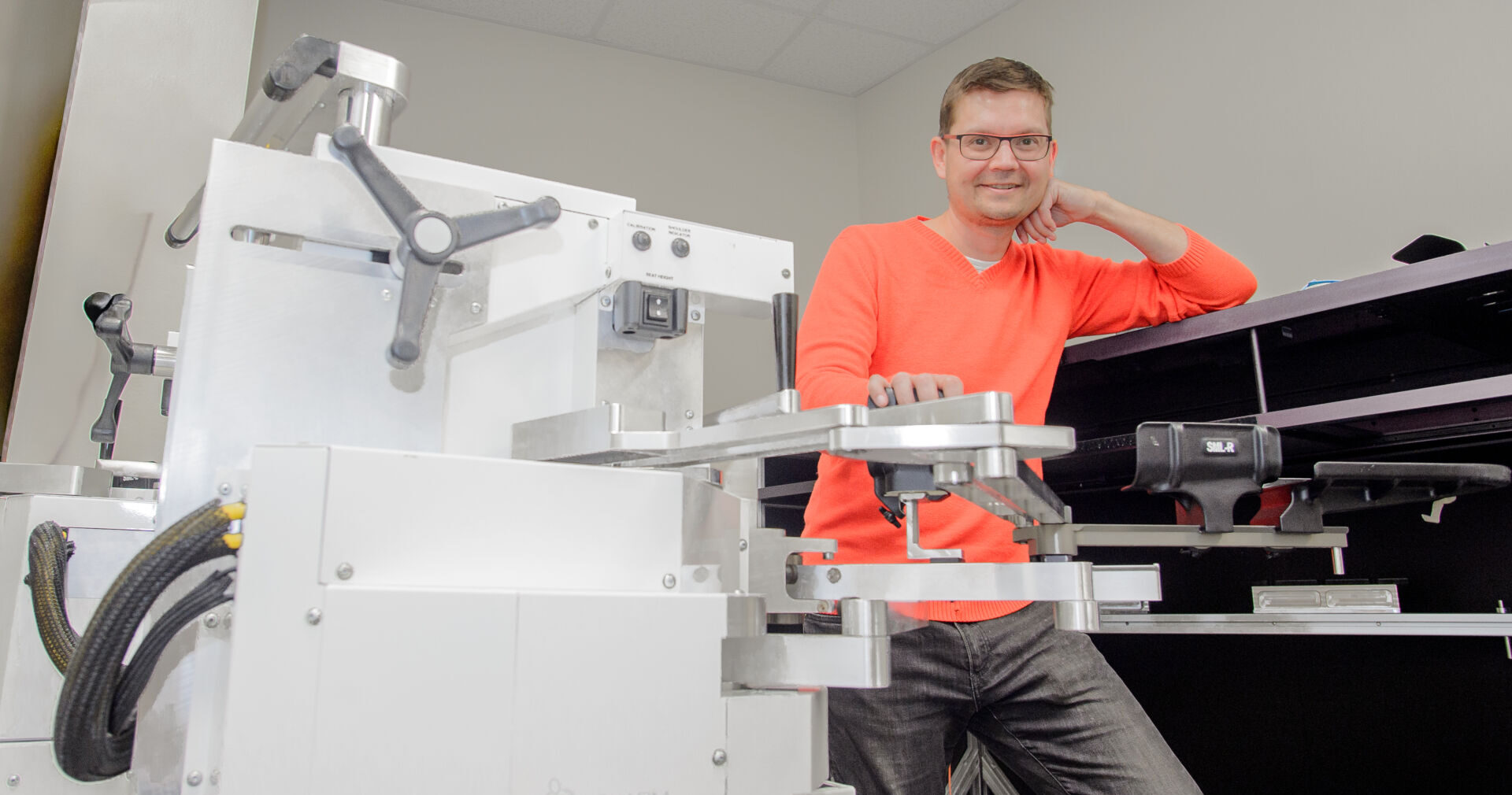Science
Study Uncovers Brain’s Ability to Predict Motor Disruptions

A groundbreaking study from Western University reveals that the human brain actively predicts and prepares for potential motor disruptions. Published in the prestigious journal Nature, the research demonstrates that our brains utilize sensory expectations to enhance our ability to respond to unexpected challenges. This discovery has significant implications for enhancing rehabilitation methods for stroke and injury patients, as well as for the development of advanced brain-computer interfaces.
The study, led by Andrew Pruszynski, a Canada Research Chair in Sensorimotor Neuroscience, involved a team that included senior author Jonathan A. Michaels and other notable researchers from Western’s Sensorimotor Superlab. The researchers utilized a robotic device to prompt participants’ arms in various directions, some of which were preceded by cues about the likely direction of the push. Participants adjusted their movements based on these cues, demonstrating that their muscles responded more effectively when the disturbance aligned with their brain’s expectations.
“This study, which took years of effort, highlights how much we still have to learn about how the brain works — and it underscores the importance of basic research in making such discoveries,” stated Michaels, now an assistant professor in the Faculty of Health at York University.
Insights into Motor Circuits
The research team recorded data from thousands of neurons in monkeys performing similar tasks. The findings indicated that motor circuits do not merely react passively to sensory signals; instead, they adopt a preparatory state to anticipate disturbances and link them to the appropriate responses.
The use of computer models, which mimicked these conditions, revealed that expectations play a crucial role in improving arm control. Pruszynski emphasized the commitment to sharing this unique dataset, which he believes will facilitate further research into how motor activity is organized in the brain. “We are 100 percent committed to sharing this data as broadly and openly as possible,” he remarked, noting that it represents one of the most thorough datasets available for studying motor control.
Technological Advancements and Future Implications
The study utilized Neuropixels, an advanced technology enabling high-density recordings from thousands of neurons. This innovation marks a significant advancement from just 15 years ago when researchers recorded individual neurons. Pruszynski reflected on the evolution of the field: “When I was in grad school, I was recording one neuron at a time… Now we routinely get 1,000 neurons in just a day or two of recording.”
The implications of this research extend beyond understanding motor control. The findings could pave the way for novel rehabilitation strategies for stroke patients and enhance the algorithms used in brain-computer interfaces. By utilizing the brain’s predictive capabilities, researchers aim to develop systems that respond more intuitively to user intentions.
With the potential to transform rehabilitation techniques and improve brain-computer interface technologies, this study underscores the importance of understanding the brain’s predictive mechanisms. As research continues, the insights gained may lead to better recovery outcomes for individuals affected by motor impairments.
-

 Lifestyle2 months ago
Lifestyle2 months agoWinnipeg Celebrates Culinary Creativity During Le Burger Week 2025
-

 Health3 months ago
Health3 months agoMontreal’s Groupe Marcelle Leads Canadian Cosmetic Industry Growth
-

 Science2 months ago
Science2 months agoMicrosoft Confirms U.S. Law Overrules Canadian Data Sovereignty
-

 Education2 months ago
Education2 months agoBrandon University’s Failed $5 Million Project Sparks Oversight Review
-

 Science3 months ago
Science3 months agoTech Innovator Amandipp Singh Transforms Hiring for Disabled
-

 Education2 months ago
Education2 months agoRed River College Launches New Programs to Address Industry Needs
-

 Technology2 months ago
Technology2 months agoDragon Ball: Sparking! Zero Launching on Switch and Switch 2 This November
-

 Technology3 weeks ago
Technology3 weeks agoDiscord Faces Serious Security Breach Affecting Millions
-

 Technology3 months ago
Technology3 months agoGoogle Pixel 10 Pro Fold Specs Unveiled Ahead of Launch
-

 Science2 months ago
Science2 months agoChina’s Wukong Spacesuit Sets New Standard for AI in Space
-

 Technology3 months ago
Technology3 months agoWorld of Warcraft Players Buzz Over 19-Quest Bee Challenge
-

 Education2 months ago
Education2 months agoAlberta Teachers’ Strike: Potential Impacts on Students and Families
-

 Business2 months ago
Business2 months agoRocket Lab Reports Strong Q2 2025 Revenue Growth and Future Plans
-

 Business2 months ago
Business2 months agoDawson City Residents Rally Around Buy Canadian Movement
-

 Technology3 weeks ago
Technology3 weeks agoHuawei MatePad 12X Redefines Tablet Experience for Professionals
-

 Business2 months ago
Business2 months agoNew Estimates Reveal ChatGPT-5 Energy Use Could Soar
-

 Technology3 months ago
Technology3 months agoFuture Entertainment Launches DDoD with Gameplay Trailer Showcase
-

 Science3 months ago
Science3 months agoXi Labs Innovates with New AI Operating System Set for 2025 Launch
-

 Technology2 months ago
Technology2 months agoInnovative 140W GaN Travel Adapter Combines Power and Convenience
-

 Business2 months ago
Business2 months agoBNA Brewing to Open New Bowling Alley in Downtown Penticton
-

 Technology2 months ago
Technology2 months agoGlobal Launch of Ragnarok M: Classic Set for September 3, 2025
-

 Technology3 months ago
Technology3 months agoNew IDR01 Smart Ring Offers Advanced Sports Tracking for $169
-

 Health3 months ago
Health3 months agoGiant Boba and Unique Treats Take Center Stage at Ottawa’s Newest Bubble Tea Shop
-

 Education2 months ago
Education2 months agoNew SĆIȺNEW̱ SṮEȽIṮḴEȽ Elementary Opens in Langford for 2025/2026 Year










